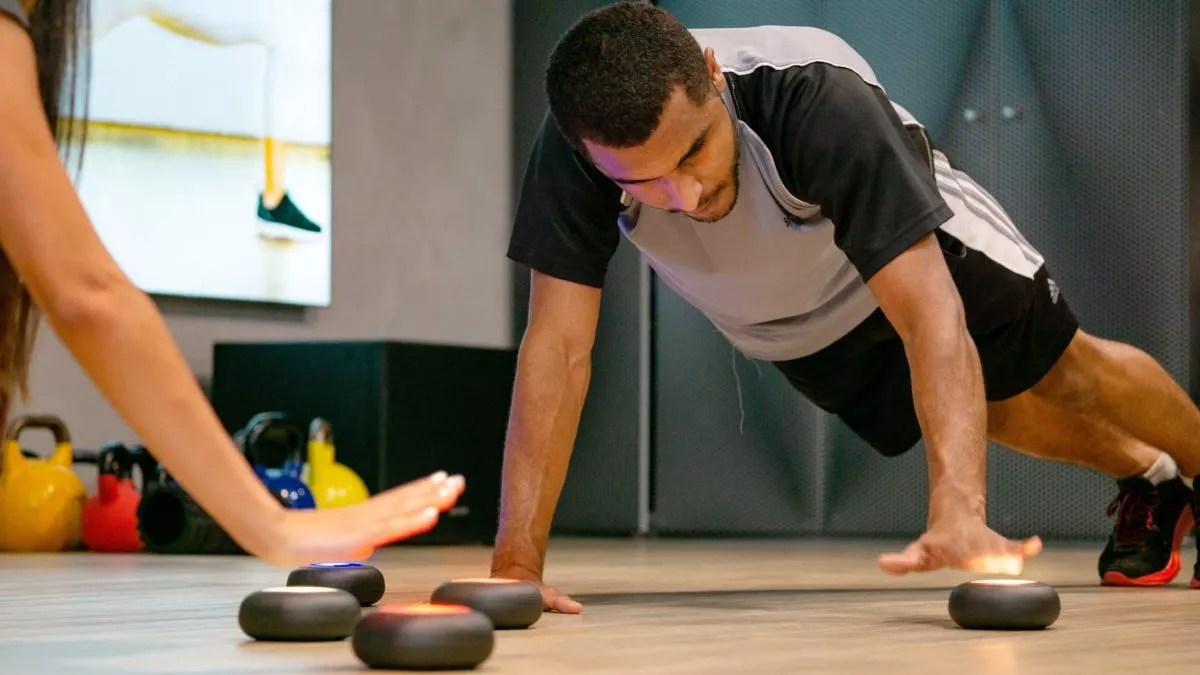Functional fitness has become increasingly popular in recent years, but it’s much more than just a fleeting trend. Unlike traditional workout routines that target isolated muscle groups, functional fitness centers around exercises that mimic real-world movements. Its main purpose is to enhance your ability to perform daily tasks more easily while minimizing the risk of injury. Curious about the benefits? Here are five surprising advantages of functional fitness that you might not anticipate.
- Enhanced Everyday Mobility Functional fitness focuses on movement patterns you use in everyday life. Whether it’s picking something up off the floor or reaching for an item on a high shelf, these exercises help improve your body’s overall fluidity in movement.
How Functional Fitness Aids Mobility Rather than isolating muscles like traditional workouts, functional fitness emphasizes compound movements that involve multiple muscle groups working together. This allows your body to move more naturally, enhancing flexibility and overall mobility.
Practical Examples of Mobility Improvements For instance, exercises such as squats simulate sitting and standing, while lunges mimic walking and climbing stairs. Functional fitness makes these everyday actions easier and less strenuous, leading to greater mobility.
- Better Balance and Coordination Most people don’t think about balance until they lose it. Whether it’s recovering from a stumble or walking on uneven ground, balance is key in preventing falls and injuries.
The Importance of Balance as We Age As we get older, balance tends to decline, increasing the risk of falls. Functional fitness helps train the body to maintain stability. By engaging core muscles and improving body awareness (proprioception), it helps preserve and even enhance balance.
Exercises That Improve Balance and Coordination Movements such as single-leg deadlifts or squats on a stability ball can significantly improve balance. These exercises challenge your coordination, making your body work harder to stay stable, which benefits real-world movement.
- Increased Strength Without Bulking Up A common misconception about strength training is that it leads to bulky muscles. However, functional fitness is designed to build strength that improves your everyday performance, without adding unnecessary muscle mass.
Functional Fitness vs. Traditional Strength Training While traditional weightlifting focuses on hypertrophy (muscle growth), functional fitness strengthens muscles for daily use by targeting multiple muscle groups at once, rather than isolating them.
How Functional Movements Tone Your Body Movements like kettlebell swings, push-ups, and carrying weights involve full-body engagement, building lean, strong muscles. This helps you achieve a toned and fit look without developing the bulky physique often associated with bodybuilding.
- Improved Posture and Less Pain Many of us are guilty of poor posture, especially if we spend hours sitting at a desk. Over time, bad posture can cause back, neck, and shoulder pain. Functional fitness helps tackle these problems directly.
The Impact of Poor Posture on Health Bad posture can strain muscles and joints, leading to discomfort and even long-term issues like chronic back pain. Functional fitness strengthens core muscles and corrects body alignment, which helps reduce pain.
Using Functional Fitness to Alleviate Pain Core-strengthening exercises like planks, deadlifts, and bridges improve posture, reducing strain on the body and helping prevent future pain and injury.
- Boosted Mental Health and Well-Being Exercise is known to improve mental health, and functional fitness offers additional mental benefits. By focusing on natural, full-body movements, it enhances the connection between the mind and body.
The Mind-Body Connection in Functional Fitness Functional exercises require concentration and awareness of body movement, encouraging mindfulness. This can help relieve stress, improve mental clarity, and create a sense of calm, similar to meditation.
Relieving Stress Through Natural Movements Functional movements not only work your muscles but also release built-up tension. Exercises like yoga flows or bodyweight exercises have a calming effect, leaving you feeling refreshed both physically and mentally.
How to Start Functional Fitness Excited to try functional fitness? It’s suitable for all fitness levels and doesn’t require any fancy equipment. You can start with basic exercises and progress over time.
Simple At-Home Exercises Exercises like bodyweight squats, lunges, push-ups, and planks are excellent starting points. These movements replicate daily actions and build strength in the muscles needed to perform them more effectively.
Tips for Beginners If you’re new to functional fitness, take it slow and focus on proper form. Pay close attention to how your body feels and avoid rushing through exercises. Consistency is key—15-20 minutes a few times a week can yield noticeable results.
Conclusion Functional fitness goes beyond just physical improvements—it enhances your overall quality of life. From better mobility and balance to reduced pain and improved mental well-being, functional fitness helps you feel stronger and more capable in daily activities. Whether you’re a beginner or seasoned fitness enthusiast, incorporating functional exercises into your routine can make a real difference. So why not give it a try and discover these benefits for yourself?
FAQs
Is Functional Fitness Suitable for All Ages? Absolutely! Functional fitness is adaptable for all ages and fitness levels, making it suitable for everyone, including seniors.
How Often Should I Do Functional Fitness? For optimal results, aim for 2-3 sessions per week, allowing your muscles time to recover while building strength and mobility.
Can Functional Fitness Help with Weight Loss? Yes, functional fitness incorporates full-body movements, which can help burn calories and assist in weight loss when paired with a healthy diet.
Do I Need Special Equipment for Functional Fitness? No special equipment is required to get started. Many functional fitness exercises rely on bodyweight, but you can add equipment like resistance bands or kettlebells as you advance.
How Long Before I See Results? You may start noticing improvements in mobility and strength within a few weeks, with more significant changes occurring after 2-3 months of consistent training.
